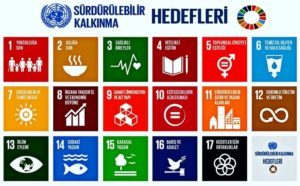 United Nations delegates met in New York in July to assess how much progress has been made towards meeting the Sustainable Development Goals, a set of 17 aims to end poverty, protect the planet and ensure that all people enjoy peace and prosperity that were signed by 193 countries. This year, the meeting was focused on how to ensure access to affordable and reliable energy, water and safe and resilient cities (goals 6, 7 and 11 0f the SDGs).
United Nations delegates met in New York in July to assess how much progress has been made towards meeting the Sustainable Development Goals, a set of 17 aims to end poverty, protect the planet and ensure that all people enjoy peace and prosperity that were signed by 193 countries. This year, the meeting was focused on how to ensure access to affordable and reliable energy, water and safe and resilient cities (goals 6, 7 and 11 0f the SDGs).
The three issues are closely connected, according to Itamar Orlandi, head of Frontier Power Research at Bloomberg NEF, the clean energy analysts, in a blog on the company’s website. Since Thomas Edison launched the world’s first utility company in 1882, “electricity has become one of the most basic components of modern life, often taken for granted”, he writes. However, decentralized renewable power technologies, in particular off-grid solar and microgrids, provide the opportunity for areas without access to the electricity network to “leapfrog” the grid. Microgrids consist of some kind of generation capacity and some kind of energy storage. In the past both functions have been performed by diesel generators, but increasingly the generating capacity will be solar and the storage will be battery storage.
While power generated using solar and a microgrid is more expensive than retail grid-connected power, it is hundreds, or even thousands, of times cheaper than the cost of extending the grid to households that are not currently grid-connected. This makes microgrids an attractive option for the 892 million people without power that are living on less than $5.50 a day, who have very modest power demands.
In many emerging markets, there are many people without power but living near to existing cities, and for them it makes sense to simply extend the grid. But Bloomberg NEF estimates that solar home systems and microgrids could grow to become a $64 billion market by 2030 as, from the mid-2020s onwards, more people will be gaining access to power through decentralized technologies than through grid connections. Forbes
